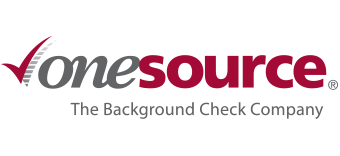EMPLOYMENT BACKGROUND SCREENING – COMPLIANCE WITH THE FCRA
The Ninth Circuit Court of Appeals issued an important opinion, relevant not only to employers responsible for providing job seekers with compliant disclosure and authorization under the Fair Credit Reporting Act (15 U.S.C. § 1681 et seq.), but also for their background screening vendors that may supply such templates to their employer clients.
In the case of Gilberg v. California Check Cashing Stores (No. 17-16263) (“Opinion”), the Court addressed the issue of the required disclosure and authorization (D&A) and whether it is “clear and conspicuous” and “in a document that consists solely of the disclosure”. (FCRA, § 1681b(b)(2)(A))
At issue was whether the various state-mandated disclosures violated the FCRA’s “standalone document” requirement and are therefore extraneous. The Court also addressed the issue of what “clear and conspicuous” is under the FCRA. Specifically, the Court considered these questions:
- Whether a prospective employer may satisfy the FCRA’s standalone document requirement by providing job applicants with a disclosure containing extraneous information in the form of various state disclosure requirements; and
- Whether the specific disclosure provided by the employer in this particular case satisfied the clear and conspicuous requirement. (See, Appendix A of the Opinion for CheckSmart Financial’ s D&A)
Before diving into the Court’s Opinion, let’s briefly discuss a key employer obligation under the FCRA when conducting a background check for employment purposes. Obligation—employers must provide the job applicant with a D&A that is a standalone, clear and conspicuous disclosure of its intention to conduct a background check.
Employers must advise job applicants of the background check when using the services of a third-party background screening company and must capture the job applicant’s consent for the said check. As recent settlements demonstrate, this requirement is not always resonating with employers.
Consider settlements and/or on-going litigation against airline carriers ($2.3 million dollars), retail stores (granted class certification), and healthcare providers ($1.3 million) to list a few.
Since neither the Federal Trade Commission nor the Consumer Financial Protection Bureau have provided users of consumer reports (aka “background check reports”) with a standard D&A we look to the FCRA itself for guidance as well as case law.
And in this area, the case law is evolving. We know, for instance, that inclusion of any type of a release of liability/liability waiver in a D&A is considered extraneous information because it violates the standalone disclosure requirement. (See, Syed v. M-I, LLC, 853 F3d 492 (9th Cir. 2017) Now, layer in state-mandated disclosures.
Previously, D&A’s included state-mandated disclosures related primarily to receiving a copy of the report (e.g., California, Minnesota, Oklahoma). Over time, additional state disclosures were added. That is now definitively a thing of the past.
The same 9th Circuit (as in the Syedcase) is saying “a prospective employer violates FCRA’s standalone document requirement by including extraneous information relating to various state disclosure requirements in that disclosure.” (Opinion at p. 4).
Court Ruling
- The Court held that the D&A used by CheckSmart Financial violated the FCRA’s “standalone document requirement” because of the inclusion of state-mandated disclosure information. Stating, “[b]ecause CheckSmart’s disclosure form does not consist solely of the FCRA disclosure, it does not satisfy FCRA’s standalone document requirement.” (Opinion at p. 14)
- The Court held that the D&A at issue was not “clear and conspicuous” (although technically the Court found that the D&A was “conspicuous” but not “clear”):
- Taking issue with the use of the term “all-encompassing” related to the scope of the D&A. (Opinion at p.17)
- Stating that combining federal and state disclosures is confusing. (Opinion at p. 17)
- On the plus side for employers, the Court did rule that the D&A was “conspicuous” because CheckSmart Financial “capitalized, bolded and underlined the headings for each section of the disclosure and labeled the form so an applicant could see what she was signing.” (Opinion at p. 18) Although it did “ding” them for the small font—Arial Narrow size 8 font.
Takeaways for Employers
- Maintain the job application (if one is used) separate and apart from the D&A. Do not embed the D&A into the job application, regardless of how “clear and conspicuous” it is believed to be.
- Understanding employers need the flexibility to conduct future checks, clearly use complete sentences when addressing the scope of the D&A.
- Do not include the state-mandated disclosures with the D&A (specifically on the same page). Include them separately and be clear about which disclosure applies to what state residents.
- Capitalize, bold and underline the D&A and use a font larger than Arial Narrow size 8.
Interesting Sidebar
The lead plaintiff, in this case, had no criminal history, worked for CheckSmart Financial for a period of time, and then voluntarily terminated her employment. After that, she pursued this putative class action alleging violations of the FCRA and state law. (Opinion at p. 9) At the appellate level, note that the district court entered summary judgment against the plaintiff and sided with CheckSmart Financial that the D&A was compliant.
ABOUT AUTHOR
Montserrat C. Miller
She began her career as a trial attorney with the Immigration and Naturalization Service handling, among other cases, employer sanctions matters. Over the years Miller has worked in both private practice and on Capitol Hill as counsel to Senator Dianne Feinstein on the Senate Judiciary Committee. She is now a partner at Arnall Golden Gregory’s Privacy and Consumer Regulatory, Immigration and Global Migration, and Government and Regulatory practices. You can read more from her at her blog.




